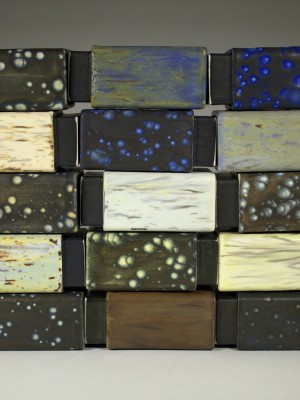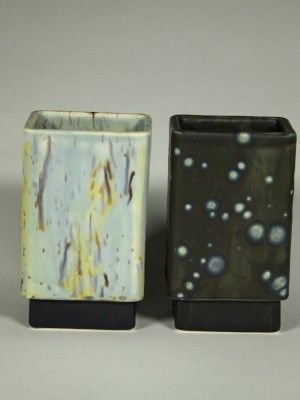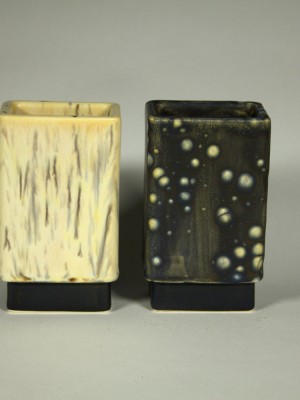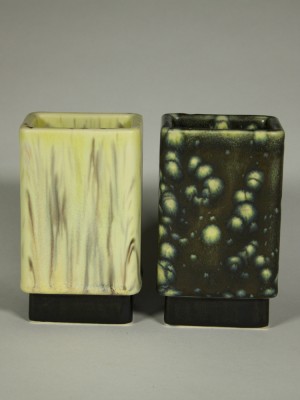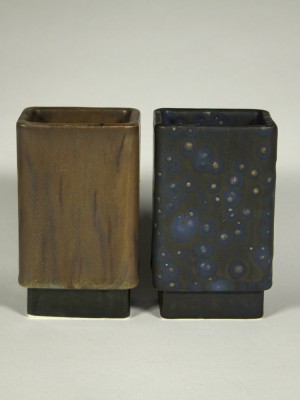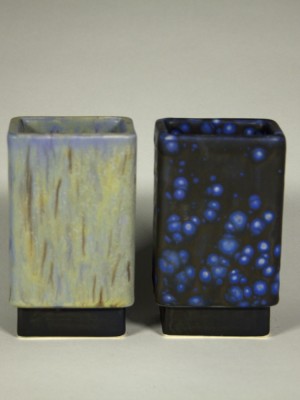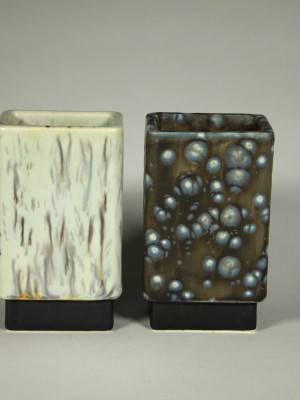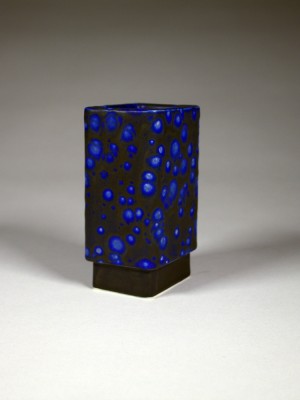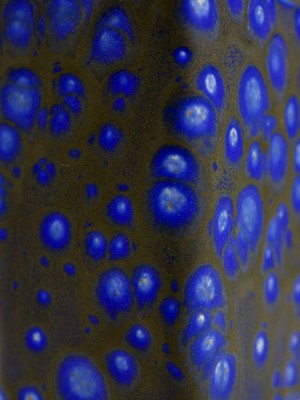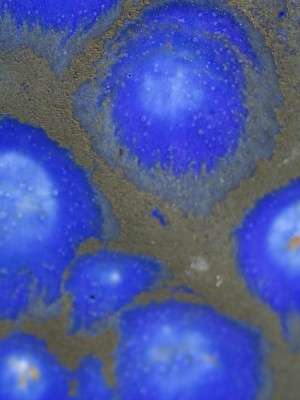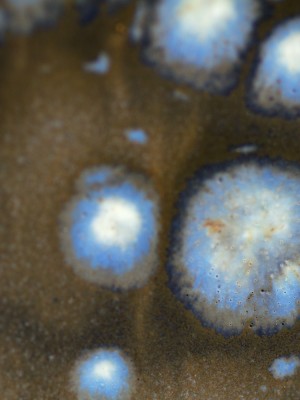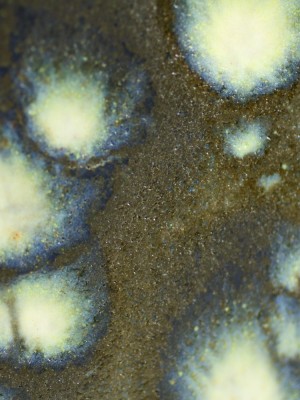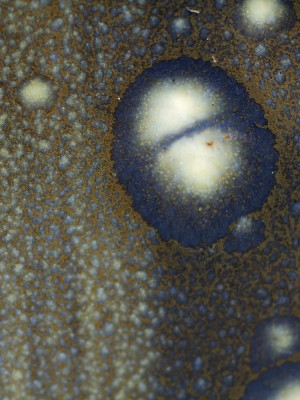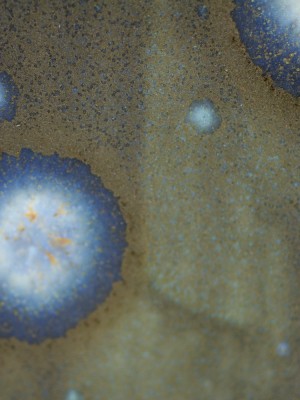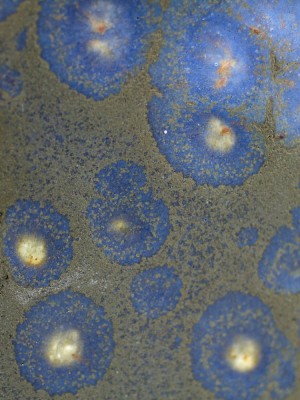This week, I used half of the small bisque vases I had on hand to do some glaze explorations. The only difference between each pair shown is the top coat of glaze. The furry vases have a white top coat and the spotted vases a black. The first two coats of glaze underneath are the same for each pair.
The white top coat glaze is made from an uncoloured base that is highly reactive with the base containing the colour. It carries the granular polymer additives that are also highly reactive. This reactivity creates a lot of surface flow.
The black top coat is made from the same base as the colour underneath, as are the polymer additives used in it. With this particular glaze, this combination of layers and additives is completely stable with every oxide and stain a potter might use. Or so I thought until I discovered there was an exception. With it, the bizarre happened. Add a little to the polymer mix and all three layers of glaze will repel from a single point in the firing. The surface of the glaze becomes dimpled. Up to now I had mainly seen this as a means to create surface texture in a glaze. The idea now is to make colour an equally important aspect.
It is not always easy to tell which colour of glaze is underneath between its reaction to the oxide and the traces of blue that are sometimes left behind by the retreating black.
This week I am working on a more comprehensive exploration of this unusual glaze effect. For now I am calling it Black Hole. I am using the remaining vases to test it over sixteen different glaze colours. Results will be posted next week.

